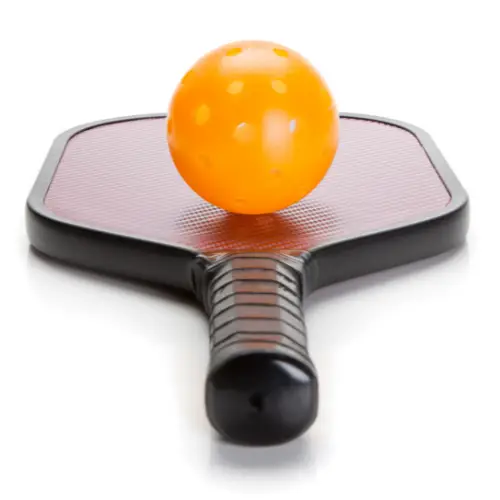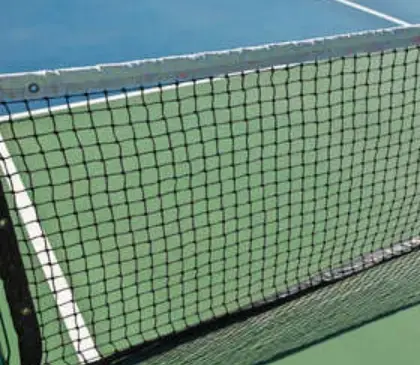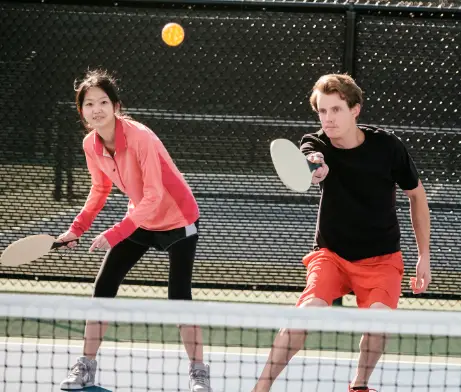Pickleball is a fast-paced sport that requires a combination of speed, agility, and coordination. As with any physical activity, it’s important to properly warm up your muscles and prepare your body for the demands of the game. Stretching is an essential part of this process, and there are many different types of stretches that can be used to target different muscle groups and improve overall flexibility. In this article, we’ll explore some of the most effective stretches for pickleball players, including dynamic, static, and proprioceptive neuromuscular facilitation (PNF) stretches. Whether you’re a seasoned pro or just starting out, incorporating these stretches into your pre-game routine can help you prevent injury, improve your performance, and enjoy the game to the fullest.
Dynamic Stretches
Dynamic stretches involve moving through controlled motions to increase flexibility and improve range of motion. Pickleball players can use dynamic stretches as a warm-up before playing to prepare their muscles for the game. Examples of dynamic stretches include:
– Arm Circles – Stand with your feet shoulder-width apart and your arms extended at shoulder level. Make small and large circles forward and backward to loosen up the shoulders.
– Leg Swings – Stand facing a wall with your hands resting on the wall for support. Swing your leg back and forth across your body to stretch the hip flexors.
– Lunge with Twist – Start in a lunge position with your left foot forward. Twist your torso to the left, place your left elbow on the outside of your right knee, and hold for a few seconds. Repeat with the other side.
Static Stretches
Static stretches involve holding a position for an extended period to lengthen and stretch the muscles. Static stretches are suitable for after you finish playing, as your muscles are warm. Examples of static stretches include:
– Shoulder Stretch – Place one arm horizontally across your chest and hold it with the opposite hand. Gently pull the arm toward the chest and hold for several seconds before switching sides.
– Hamstring Stretch – Sit on the ground with your legs extended in front of you. Reach for your toes and hold for several seconds before relaxing.
– Quad Stretch – Stand with your feet hip-width apart and balance on one leg. Reach back with your opposite hand and grab your ankle. Gently pull your leg back and hold for several seconds before switching sides.
PNF Stretching
Proprioceptive Neuromuscular Facilitation (PNF) stretching involves contracting and relaxing specific muscles to help them relax and stretch further. PNF stretching requires a partner or coach to assist. PNF stretches can be intense for some individuals, and it is essential to ease into these stretches. Examples of PNF stretches include:
– Leg Raise – Lie on your back and straighten one leg out in front of you. Use a partner or resistance band to pull the leg toward your chest. Hold the stretch while your partner provides resistance before relaxing and pulling the leg further.
– Arm Extension – Stand with your partner facing you. Raise one arm out to the side, and your partner applies pressure to push your arm down. Contract your arm muscles against the pressure for several seconds before relaxing. Repeat several times before switching arms.
Foam Rolling
Foam rolling uses a foam roller to massage your muscles and release any tension and tightness. Foam rolling is similar to a deep tissue massage and is suitable for after playing. Foam rolling can be a bit painful, and it is essential to roll slowly and breathe deeply through the process. Examples of foam rolling exercises include:
– Calves – Sit on the ground with your legs extended in front of you and rest the foam roller under your calves. Roll the foam roller from the ankle to the knee, focusing on any tight or painful areas.
– Upper Back – Lie on your back with the foam roller under your shoulder blades. Roll up and down from the top of your shoulders to the mid-back, focusing on any tight or painful areas.
– IT Band – Lie on one side, with the foam roller under the hip and the leg extended. Roll from the hip to the knee, focusing on the lateral side of your thigh.
Yoga
Yoga is a type of exercise that involves stretching, strength, and balance poses to focus on mindfulness and breathing. The practice of yoga will help to strengthen muscles, increase flexibility and mobility, and improve balance and coordination. Examples of yoga poses that will benefit every pickleball player include:
– Downward Dog – Start in a push-up position, and then lift your hips high. Your body will look like an upside-down V shape. Hold this pose while stretching your hamstrings and shoulders.
– Warrior 2 – Start by standing with your feet hip-width apart. Step your left foot forward and your right foot back, turn your right foot to a 90-degree angle, and bend your left knee. Reach your arms out to the side and look over your left hand. Hold for several breaths before switching sides.
– Tree Pose – Stand with your feet hip-width apart and balance on your left foot. Bring your right foot up to your left inner thigh and place your hands at heart center. Hold this pose while focusing on your breath and balance before switching sides.
Conclusion
If you want to play the best pickleball game of your life and protect yourself from injury, stretching is a habit you cannot ignore. Make sure to take the time to perform these types of stretches regularly to ensure your muscles are ready for peak performance. By incorporating dynamic and static stretches, PNF stretching, foam rolling, and yoga into your warm-up and cool-down routine, you will notice increased flexibility, mobility, and overall comfort with your game. Remember to listen to your body and start slowly if you are new to stretching or recovering from an injury. Enjoy the game and enjoy the newfound flexibility stretching can provide.







